Part 2 of this series is intended for the parents of curious toddlers. I include resources and materials for children 10 months old through 36 months old in this post. If your target language is not directly addressed in this post, I recommend you take my tips and suggestions and incorporate them into your child’s language plan.
I always knew that I wanted my children to learn a second and third language alongside their native language (English). I also knew that in order to succeed, I had to be creative, strategic and savvy about my approach to multilingualism because my husband and I worked outside of the home during the day and because English is my husband’s and my native language. Accordingly, from very early on, my boys were exposed to both Spanish and German numerous hours per day until the age of 5. We partnered with a large network of wonderful individuals who supported our goals and helped us succeed. Some of our partners were: au pairs (See Our Language Learning Partners), grandparents, multilingual friends and family members as well as language teachers at the language schools they attended.
Tip: In addition to partnering with key people who supported our multilingual goals, I researched and procured materials in either the target language or generic age-appropriate tools that helped reinforce vocabulary and concepts that my toddlers were learning in their native language. Below is my top ten list of activities, games, toys, and books:
Tool #1: Musical Instruments
Having a quality set of musical instruments was a must to complement the songs we liked to listen to when they were babies. (See Part 1 of this Series – Babies) Adding the interactive opportunity to make music and accompany our favorite songs enriched their language-learning experience. These instruments can also be used to practice infrequently used vocabulary words
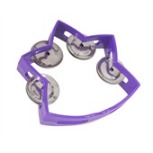
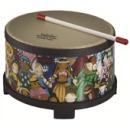
 relating to sound and music such as ‘high and low’, ‘loud and soft’, ‘pleasant and unpleasant’, ‘fast and slow’. These instruments also come out for birthdays and family sing alongs…
relating to sound and music such as ‘high and low’, ‘loud and soft’, ‘pleasant and unpleasant’, ‘fast and slow’. These instruments also come out for birthdays and family sing alongs…
Our castanets, cymbals, harmonicas, triangles, maracas, drums, rhythym sticks, and more were from West Music, an excellent source for quality, long lasting, durable instruments for children.
Tool #2: Board Games
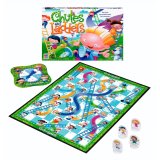
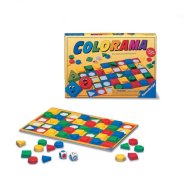
Generic games such as Chutes and Ladders (numbers 1-100 and directions), Colorama (shapes and colors) and Kid O Memory Match 16 (animals, insects, numbers, colors etc.) not only help reinforce basic vocabul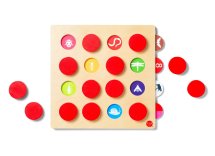 ary words, but also help your child begin to think in the target language as he gets engrossed in the game. Children enjoy explaining games and rules to new players, and they gradually and naturally start using expressions, such as ‘your turn/my turn’; ‘that’s right/ that’s wrong’; ‘I go first/you are next’; and ‘I am winning’…)
ary words, but also help your child begin to think in the target language as he gets engrossed in the game. Children enjoy explaining games and rules to new players, and they gradually and naturally start using expressions, such as ‘your turn/my turn’; ‘that’s right/ that’s wrong’; ‘I go first/you are next’; and ‘I am winning’…)
Tool #3: Play Doh Shapes, Cookie Cutter Sets and Accessories
Another activity that I found was conducive to naturally thinking in the target language and practicing new vocabulary was creating Play Doh shapes with cookie cutters and accessories. I am not a baker, so when I got the Wilton 101-Piece Cookie Cutter Set as a gift, I immediately put it to use as a fun learning tool and incorporated it into the Play Doh experience. My Wilton set included, letters and numbers as well as geometric shapes and holiday theme-related sha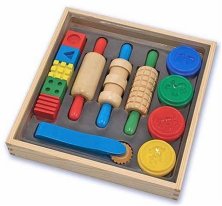 pes
pes 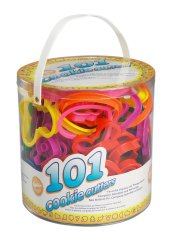 perfect for practicing certain words at given times during the year, such as Valentine’s Day, Easter/Spring, and Halloween. Obviously, if you enjoy baking, you can get the same results when you use the cookie cutters for their intended purpose and get to eat your creations, for an added bonus!
perfect for practicing certain words at given times during the year, such as Valentine’s Day, Easter/Spring, and Halloween. Obviously, if you enjoy baking, you can get the same results when you use the cookie cutters for their intended purpose and get to eat your creations, for an added bonus!
Then, I accessorized using Melissa & Doug’s Shape Model and Mold and added fun tools such as rolling pins and textured cubes to practice additional descriptive words and verbs. We used and re-used these tools for a very long time and my boys highly enjoyed their time playing and learning with them.
Tool #4: Floor Puzzles
Floor puzzles were a relaxing (quiet) way to engage the boys in the target language while they busily scurried around the floor to find the pieces to match and complete the puzzles. You can shop for puzzles that support your child’s language plan depending on your child’s interests, level, and attention span. I recommend the Alphabet puzzles available in your target language. It is always advantageous for children to have a visual of the alphabet in their target language with words representing each letter. You can see the sparkle in their eyes when the see the words and make the connection to the letter. As they got more and more excited about completing the puzzle I found they naturally started speaking and thinking in the target language!
Tool #5: Picture Dictionaries/Diccionarios por Imágenes
My children transitioned smoothly from Picture Books from Part 1 of this Series – Babies to the Mini Diccionarios por Imágenes collection. This series of books is from Spain and I highly recommend it for its content, illustrations, quality and variety!! Among our favorites were: The City, Opposites and My First Picture Dictionary. A great title for budding world citizens is Children of the World. These books explain simple concepts in full sentences and provide context and practical comments. My boys couldn’t get enough of these books. The illustrations are child-friendly and colorful. An added bonus is that the books are interactive. There are one-line questions on every page to engage the child and encourage them to think and speak about what they are seeing on the illustrated pages. They also come in handy when your child begins to read.
Tip: I strategically selected DVD’s that were age-appropriate, developmentally on point and well narrated:
Tool #6: Sounds by Small Fry Productions
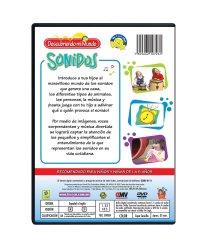
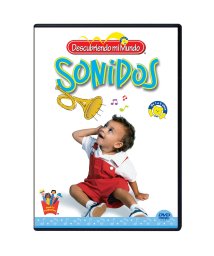
I think it is universal and fun, not to mention precious, to teach children animal sounds, but sometimes we forget to teach sound identification and association in the target language. Some of my family’s favorite sounds in the Sonidos DVD were; ringing, crunching, whispering, laughing, and stomping. My children genuinely enjoyed it and giggled through several parts. This DVD features live action, catchy music, child actors and familiar objects to help children make learning connections. The Spanish spoken on this DVD is neutral and pleasant. It contains an interactive segment, called “Mystery Sounds” which was a big hit in our family. The entire DVD piqued my boys’ curiosity about the different Spanish words used for sounds. Sonidos is narrated in full sentences and is ideal for bilingual children, between the ages of 2 and 5, who have a comfort level in Spanish. Sonidos by Small Fry Productions.
Tool #7: The Seasons of the Year by Small Fry Productions
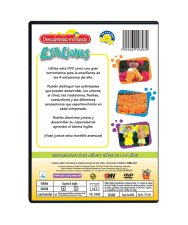
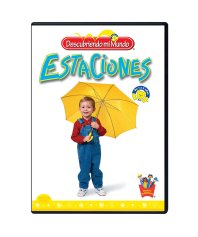
Estaciones introduces children between 2 and 5 to the four seasons and takes them on a trip through the seasons. Children learn to make connections between the holidays and the time of year. Some our favorite scenes were: sledding, splashing and backyard fun. The Spanish spoken on this DVD is neutral and pleasant. It features live action, child actors and familiar settings such as beaches, snowy hills, flower gardens and pumpkin patches to help children make learning connections. Estaciones, is narrated in full sentences and is ideal for bilingual children, between the ages of 2 and 5, who have a comfort level in Spanish. Estaciones by Small Fry Productions
Tool #8: Sal y Pimienta by Susy Dorn
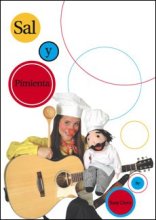
This DVD by Susy Dorn was an all-around favorite for several years in our family. Susy Dorn is a teacher, school director, singer-songwriter, puppeteer and a native speaker. Her Spanish is impeccable and she is a sweetheart. Her teaching methodology includes theater, puppetry, games, and music that she composes and sings. Her songs are all very catchy and perfect for leaning and remembering vocabulary words such as the planets, good manners, sports, insects, emotions, rhyming words and so much more. Sal y Pimienta DVD is engaging and guaranteed to bring a smile to your toddler’s face. It is available on Amazon and on her website.
Tool #9: Audio Books in the Target Language
Because I am less proficient in German than I am in Spanish, I resorted to the “Mein Hör-Spiel-Buch” series. If we did not have a German native speaker on hand to read to the boys, then I would play the CD and they would eagerly follow along. There are many enjoyable stories available in “Mein Hör-Spiel-Buch” series, and you can view the list on Amazon.de.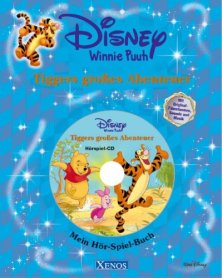
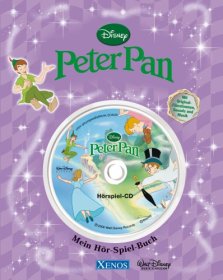
Tool #10: Multi-Region DVD Player
When my toddlers were between the age of 2 and 3, I started mixing things up a bit with real-world educational material and added animated features with dubs in the target language. And so, I purchased a multi region DVD player to be able to view the DVDs we got from Spain and Germany. More
You can apply this tip of implementing real-world educational material to the target language of your choice. World-renowned characters such Pocoyo, Winnie the Pooh and Caillou can be watched in various world languages such as German, French, Greek, Italian, Spanish, Romanian, Polish and Mandarin! Most toddlers and pre-schoolers identify with these lovable characters and enjoy watching regardless of the language it is in!
There are a variety of Multi Regional DVD players on the market. We have been using the Samsung DVD-C500 HDMI Multi All Region DVD player and have been satisfied. It is a basic version, it is easy to install and does the job!
 Tip: Enroll your Toddler in a Language Class
Tip: Enroll your Toddler in a Language Class
Enroll your toddler in a quality Language Program that will enrich him and support your goal as a parent. See my post How to Choose A Language Program for Your Little One for additional Tips. Toddlers get so much pleasure from socializing with other children, and it is so special for parents to see how their little ones flourish in a second language. It is natural for toddlers to want to communicate with, observe, listen to and play with other children. Bringing your child to an environment outside of the home to do just that, in the target language, is so beneficial and stimulating!!
I hope that these Tips and Tools make you and your toddler as happy and as excited about languages as they made us. All of my recommendations are based on my personal experience using the products with my children since 2006.
Frances Mingoia is a participant in the Amazon Services LLC Associates Program, an affiliate advertising program designed to provide a means for sites to earn advertising fees by advertising and linking to amazon.com.
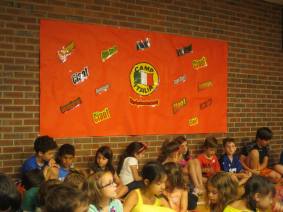

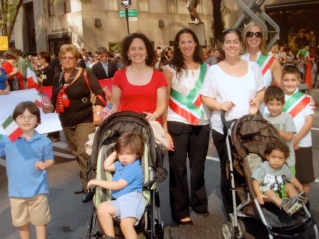
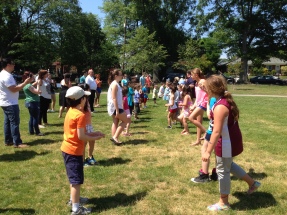
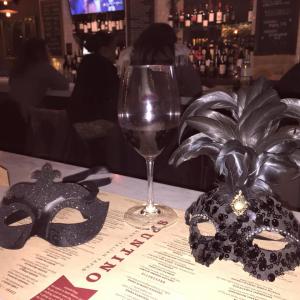

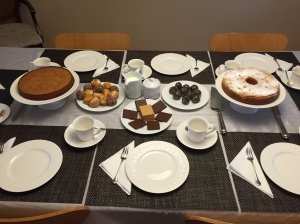
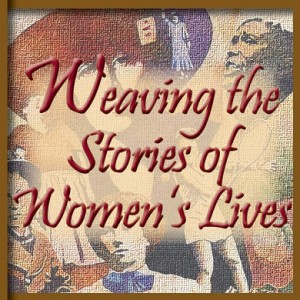
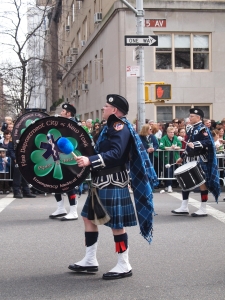
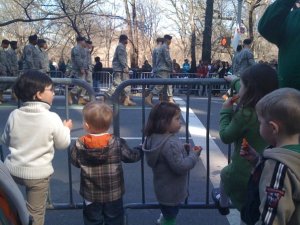



 relating to sound and music such as ‘high and low’, ‘loud and soft’, ‘pleasant and unpleasant’, ‘fast and slow’. These instruments also come out for birthdays and family sing alongs…
relating to sound and music such as ‘high and low’, ‘loud and soft’, ‘pleasant and unpleasant’, ‘fast and slow’. These instruments also come out for birthdays and family sing alongs…

 ary words, but also help your child begin to think in the target language as he gets engrossed in the game. Children enjoy explaining games and rules to new players, and they gradually and naturally start using expressions, such as ‘your turn/my turn’; ‘that’s right/ that’s wrong’; ‘I go first/you are next’; and ‘I am winning’…)
ary words, but also help your child begin to think in the target language as he gets engrossed in the game. Children enjoy explaining games and rules to new players, and they gradually and naturally start using expressions, such as ‘your turn/my turn’; ‘that’s right/ that’s wrong’; ‘I go first/you are next’; and ‘I am winning’…) pes
pes  perfect for practicing certain words at given times during the year, such as Valentine’s Day, Easter/Spring, and Halloween. Obviously
perfect for practicing certain words at given times during the year, such as Valentine’s Day, Easter/Spring, and Halloween. Obviously






